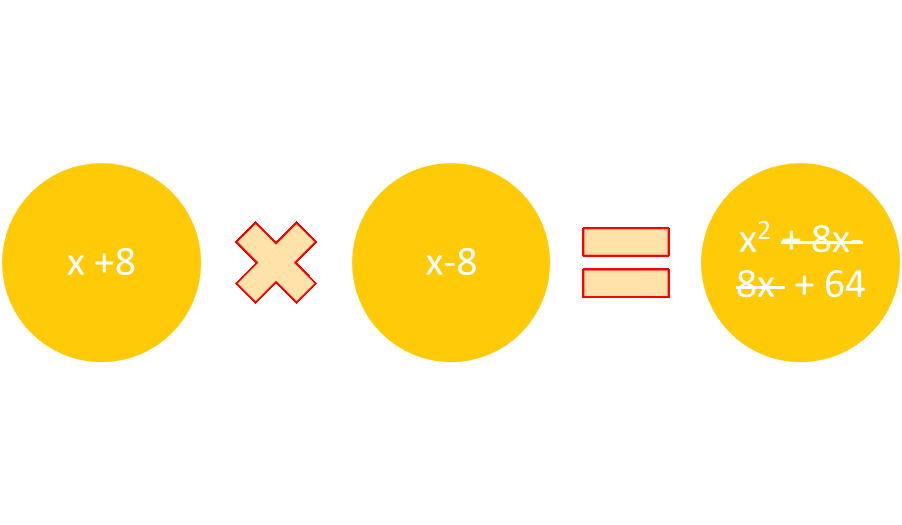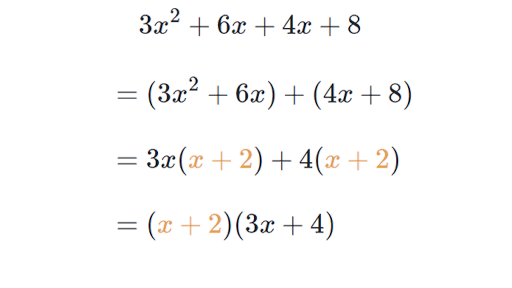Factorization of Polynomials
Factorization of polynomials is the process by which we decompose a polynomial expression into the form of the product of its irreducible factors, such that the coefficients of the factors are in the same domain as that of the main polynomial.
Factoring Polynomials means decomposing the given polynomial into a product of two or more polynomials using prime factorization. Factoring polynomials help in simplifying the polynomials easily. The first step is to write each term of the larger expression as a product of its factors. As a second step, the common factors across the terms are taken out in common to create the required factors.

Here in this polynomial, the exponent of x is n and it has n factors. The number of factors is equal to the degree of the variable in the polynomial expression. Higher degree polynomials are reduced to a simpler lower degree, linear or quadratic expressions to obtain the required factors. Factoring polynomials can be understood with the help of a simple example. The quadratic polynomial x2 + x(a + b) + ab can be factorized as (x + a)(x + b).
Process of Factoring Polynomials
The following steps help for the process of factoring polynomials. Follow the below sequence of steps to factorize a polynomial.
- Factor out if there is a factor common to all the terms of the polynomial.
- Identify the appropriate method for factoring polynomials. You can use regrouping or algebraic identities to find the factors of the polynomial.
- Write polynomial as the product of its factors.
Methods of Factoring Polynomials
There are numerous methods of factoring polynomials, based on the expression. The method of factorization depends on the degree of the polynomial and the number of variables included in the expression. The four important methods of factoring polynomials are as follows.
- Method of Common Factors
- Grouping Method
- Factoring by splitting terms
- Factoring Using Algebraic Identities
Method of Common Factors
This is the simplest method of factoring an algebraic expression by taking common factors of each of the terms of the given expression. As a first step, the factors of each of the terms of the algebraic expression are written. Further, the common factors across the terms are taken to obtain the possible factors. This is equivalent to using the distributive property in reverse. Let us understand this better with the help of an example.
Consider a simple example: 3x+9
By factoring each term we get, 3 x + 3 . 3
By distributive law, 3x+9= 3.x + 3.3 = 3(x+3)
Factoring Polynomials By Grouping
The method of grouping for factoring polynomials is a further step to the method of finding common factors. Here we aim at finding groups from the common factors, to obtain the factors of the given polynomial expression. The number of terms of the polynomial expression is reduced to a lesser number of groups. First, we split each term of the given expression into its factors and further aim at taking common terms to find the group of factors. Let us try to understand grouping for factorizing with the help of the following example.
Let us solve an example problem to more clearly understand the process of factoring polynomials.
Factoring Polynomials Using Algebraic Identities
The process of factoring polynomials can be easily performed using algebraic identities. The given polynomial expressions represent one of the algebraic identities. Also sometimes the given expression has to be modified so as to match with the expression of the algebraic identities. A few of the algebraic identities are helpful in factoring polynomials.
Let’s factorize the polynomial 4z2-12z+9
Observe that 4z2=(2z)2, 12z=2 × 3 × 2z, and 9 = 32
So, we can write 4z2-12z+9 = (2x)2 + 2(2x)(3) + 32
= (2z – 3)2
Factoring Polynomials by Splitting Terms
The process of factoring polynomials is often used for quadratic equations. While factoring polynomials we often reduce the higher degree polynomial into a quadratic expression. Further, the quadratic equation has to be factorized to obtain the factors needed for the higher degree polynomial. The general form of a quadratic equation is x2 + x(a + b) + ab = 0, which can be split into two factors (x + a)(x + b) = 0. Consider the quadratic polynomial of the form x2 + x(a + b) + ab.
=x.x + ax + bx + ab
=x(x + a) + b(x + a)
=(x + a)(x + b)
Here in the above polynomial, the middle term is split as the sum of two factors, and the constant term is expressed as the product of these two factors. Thus the given quadratic polynomial is expressed as the product of two expressions. Let us understand this better, by factoring a quadratic polynomial x2 + 7x + 12.
x2 + 7x + 12
= x.x + 3x + 4x + 3.4
= x(x + 3) + 4(x + 3)
x2 + 7x + 12 = (x + 3)(x + 4)
Thus factoring polynomials is done using splitting the middle terms as in a quadratic polynomial.
